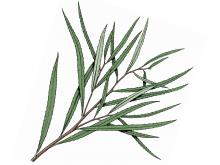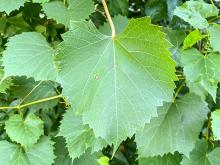Trees, Shrubs and Woody Vines
Media

Species Types
Scientific Name
Various species in the genus Crataegus
Description
Our state flower, the hawthorn, is solidly represented in Missouri. There are about 100 different kinds of hawthorns that occupy almost every kind of soil in every part of the state. These members of the rose family are closely related to apples.
Media

Species Types
Scientific Name
Platanus occidentalis
Description
The white, smooth-looking limbs of sycamore rise over countless streams and river banks, as well as over sidewalks and city streets. The leaves, which somewhat resemble those of maples, can reach remarkably large sizes.
Media

Species Types
Scientific Name
Salix spp. (about 12 species in Missouri)
Description
Exotic willows are available at lawn and garden centers, but there are several willow species that are native to Missouri. Most are rather humble colonizers of gravel bars, riverbanks, and lakesides. Many are important for human economic interests. All have a place in our wild ecosystems.
Media

Species Types
Scientific Name
Salix interior (formerly S. exigua)
Description
Identify sandbar willow by its very narrow leaves with widely spaced, slender teeth along the margins. This is a good soil binder and bank stabilizer; it prevents washing and erosion of alluvial soil.
Media

Species Types
Scientific Name
Euonymus fortunei
Description
Introduced from Asia as a groundcover, wintercreeper has escaped cultivation in all the eastern states. It’s frequently found near urban centers, with heavy infestations in woodlands around St. Louis and Kansas City.
Media

Species Types
Scientific Name
Physocarpus opulifolius
Description
An attractive shrub with wide-spreading, graceful, recurved branches and bark peeling off in conspicuous thin strips, ninebark is found throughout southern and eastern Missouri on gravel bars, rocky stream banks, and bluffs along streams. It's very popular as a native landscaping shrub, too.
Media

Species Types
Scientific Name
Vitis cinerea
Description
Winter grape is a wild grapevine that can climb up to 50 feet. It occurs in low woods and along streams, in thickets, and in fencerows. It’s common in the southern two-thirds of Missouri.
Media

Species Types
Scientific Name
Vitis vulpina
Description
Frost grape is a vigorous vine climbing to 60 feet in length using tendrils. It is scattered statewide, growing in bottomlands, along streams, in low, wet woods, at bases of bluffs, and in thickets.
Media

Species Types
Scientific Name
Vitis species
Description
Eight species of grapes in the genus Vitis are native or naturalized in Missouri. All bear edible fruits. Like their relatives elsewhere, they have important connections to humans and to nature.
Media

Species Types
Scientific Name
Symphoricarpos orbiculatus
Description
Buckbrush, or coralberry, grows throughout Missouri. This familiar thicket-forming shrub bears dense clusters of pinkish-red berries that persist through most of the winter.
See Also
About Trees, Shrubs and Woody Vines in Missouri
There are no sharp dividing lines between trees, shrubs, and woody vines, or even between woody and nonwoody plants. “Wood” is a type of tissue made of cellulose and lignin that many plants develop as they mature — whether they are “woody” or not. Trees are woody plants over 13 feet tall with a single trunk. Shrubs are less than 13 feet tall, with multiple stems. Vines require support or else sprawl over the ground.





















